VOL- 2; ISSUE- 3. - PUNE RESEARCH An International Journal in English (ISSN 2454-3454)
2.3 RESEARCH
Area of Article : All

VOL- 2; ISSUE- 3. - PUNE RESEARCH An International Journal in English (ISSN 2454-3454)
2.3 RESEARCH

VOL- 2; ISSUE- 3. - PUNE RESEARCH An International Journal in English (ISSN 2454-3454)
2.3.1

According to the preaching of social reformers, Government schemes and NGO, we have observed that positive changes are taking place in the social, economic, political and educational lives of the tribal women. Yet the tribal women remain to a large extents isolated and out of reach of the helping hand to bring real changes expected in their lives. This paper is an effort to throw light and spread awareness about the precarious conditions of tribal women despite of many schemes and efforts in order to find an adequate solution to bring effective and long lasting changes in the lives of tribal women.
Keywords
– Tribal women, religious background, empowerment, gender gaps, physical
violence, social inequalities, Government policies.
VOL- 2; ISSUE- 3. - PUNE RESEARCH An International Journal in English (ISSN 2454-3454)
2.3.2

This paper is an effort to focus on the
significance of English and its direct role in developing digital literacy but
for which it won’t be possible for an individual to make pace with the
digitally fast changing world around and thereby being smart in the matter of
education as well. It also emphasises on the role of English Language in
inculcating the habit of smart living and building smart thinking and learning
among the youth. As it is known that English Language is the lingua franca of
the world, and today most of the knowledge on internet is available in English
language only, it goes needless to say that this language can play a vital role
in making the people digitally literate.
Key Words: Digital Literacy, Smart Living, Smart Thinking, Smart Thinking
VOL- 2; ISSUE- 3. - PUNE RESEARCH An International Journal in English (ISSN 2454-3454)
2.3.3

The Legend of Nandan: Nandan Kathai by
Indira Parthasarthy translated from Tamil by C.T. Indra. It brings out the
conditions of abject poverty, unhealthy and insanitary conditions in which the
Dalit people have been sheltered, but they held a belief that they are accursed
to live such lives. The protagonist Nandan, in a way has been the symbol of
Dalit aspiration for liberation. His protest against injustice sought to find a
voice for oppressed people. Centuries of oppression and indoctrination could
have hardened their frustration and made them believe that they are destined to
suffer as slaves and there is no escape other than the religious route. To
prove his devotion to God he undergoes the ordeal. He thinks that his salvation
lays in attaining ‘mukti’(the feet of God) through ‘bhakti’. The unchangeable
devotion transforms a common man into a legend and makes him to be remembered
for centuries.
VOL- 2; ISSUE- 3. - PUNE RESEARCH An International Journal in English (ISSN 2454-3454)
2.3.4

The realities of women’s lives seem to
be gaining greater significance day by day.
Women writers have explored the stance of male chauvinism and atrocities
committed against women. Victims are
those against whom atrocities have been committed in the name of culture,
tradition, religion, social acceptance, hypocrisy and man’s inhumanity towards
fellow human beings. The importance of
men and their superiority has been a part of Indian Social Mores for
generations. Women have always been less
important individuals. When a woman
lives in a male dominated society obviously she undergoes many hardships. Manju Kapur has joined the growing number of
women writers from India on whom the image of suffering but stoic women
eventually breaking the traditional boundaries has had a significant
impact. Her female protagonists are
mostly educated, aspiring individual caged within the confines of a
conservative society. In her novel ‘A
Married Woman’ Manju Kapur brings forth those hard facts that will go a long
way in demystifying marriage. The novel
discussed the tragic tale of the middle class working women with Astha as the
main heroine and Peepilika as the titular one.
Astha imbibes middle class values and latter suffers from a sense of
incompleteness in her married life.
Through the personal private lives of these characters Manju Kapur
exposes the existing tension and the oscillation of the self between the two
state of mind. She gives her readers
valuable insights into the feminine consciousness through her protagonists. This paper speaks about the problems faced by
the protagonists of the novels to have an identity of their own.
VOL- 2; ISSUE- 3. - PUNE RESEARCH An International Journal in English (ISSN 2454-3454)
2.3.5
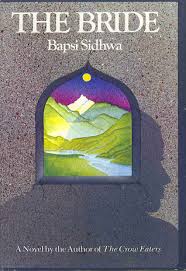
Bapsi Sidhwa’s The Bride deals with the
repression of women in the patriarchal Pakistani society. It provides an
incisive look into the treatment of women. It is the most critical towards
unjust traditions that undermine the structure of the community. Sidhwa brings
into focus the issue of Pakistani women’s plight through the eyes of an
outsider, Carol, an American bride of the Pakistani man. Sidhwa’s female
characters in The Bride are as strong as the men who run their lives; in the
way that they resist the limitations of the definition of ‘woman’ which
circumscribes their identity. The Bride not only offers the struggle and the
courage of a woman but also a condemnatory view of the practices of the
patriarchal society of Pakistan. Sidhwa explicates the dangers posed to the
development and stability of the country’s community, not by the outside forces
but by those within. Sidhwa emphasizes the two aspects of Nature and
symbolically presents the external adventure of man into the unknown and his
struggle for survival against the cruelty of Nature. Zaitoon’s struggle is at
one level a struggle of man against Nature but it is also at another level the
struggle of a woman against both man and Nature. It is a struggle to cross the
deep and unbridgeable abyss of the changeless and stagnant social order of the
Muslim male and to become a whole person.
Key words: Pakistani society, unjust traditions, exploitation of women and nature
VOL- 2; ISSUE- 3. - PUNE RESEARCH An International Journal in English (ISSN 2454-3454)
2.3.6

Kiran Nagarkar is the most prominent Indian writer in the canon of Indian English literature. He reveals the distress and disorientation of his protagonist in his famous novel Ravan and Eddie. His protagonist Ravan undergoes a struggle to find his real self. He tolerates the cramping pressures of anxieties and sometimes lost in it. Nagarkar remains primarily a novelist of moods, of persistent states of mind, of the psyche. He sees the world in terms of experience as it emerges from the encounter of the self with the world outside. The present research paper probes into the world of the protagonist and his deep psychological problems. Through the theme of identity crisis, the researcher wants to display the tragic plights and condition of existence of protagonists in an effective manner.
Keywords: real self, conditions of existence, states of mind, psychological problems, real relationships, Identity crisis, distress and disorientation etc.
VOL- 2; ISSUE- 3. - PUNE RESEARCH An International Journal in English (ISSN 2454-3454)
2.3.7

Mobile technology has become commonplace tools, yet people have less awareness to use this technology for teaching and learning purpose. In this research paper the researcher reported on an investigation into personal mobile device used by teachers and students. The study identified various types of activities undertake, and focused on emerging issues in relation to innovative practices. Participants described their uses of four types of devices (mobile phone, smart phones, PDA and MP3 player), the frequency of specific uses, and their views on the advantages of mobile learning.
Key terms: mobile assisted language learning, education technology, constructivism
VOL- 2; ISSUE- 3. - PUNE RESEARCH An International Journal in English (ISSN 2454-3454)
2.3.8
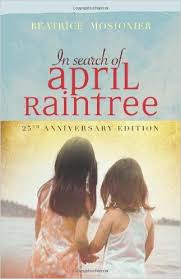
The major theme in the post-colonial literature is the identity crisis and the struggle for existence . Colonialism’s dangerous effects cannot be easily eradicated and completely since it gets complicated with other kinds of cultural domination which coexist with colonialism. Although most of the former colonies do not encounter external political control, covert impositions of hegemony still exist in the form of economic and political power, especially in Canada. The search for ways of survival and existence becomes the problem of identity
Keywords: Existence ,Native girl syndrome ,Metis people, Colonization, Identity crisis.
VOL- 2; ISSUE- 3. - PUNE RESEARCH An International Journal in English (ISSN 2454-3454)
2.3.9
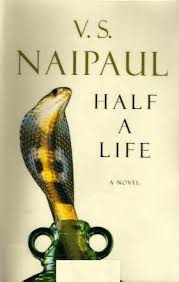
This paper focuses on the reasons that stimulate migration in V.S. Naipaul’s novelHalf a Life. Though there are many aspects of the diasporic experience, there is a need for analyzing the reasons behind migration. The novel Half a Life portrays the life of Willie Somerset Chandran who migrates to London and then to Africa due to various reasons. Not only Willie but also other characters such as his sister Sarojini , wife Ana and her father, Willie’s Jamaican friend Percy Cato and so on depict the life of migrants in different ways. Migrations as well as re-migrations occur in this novel forming the ‘leit motif’ of the novel which prompts the reader to analyze the reasons behind such movements. This paper also brings out the expectations and disappointments of the migrant in the foreign land which lead him from ignorance to experience.
Keywords: Reasons, adaptation, assimilation, migrants, diaspora
VOL- 2; ISSUE- 3. - PUNE RESEARCH An International Journal in English (ISSN 2454-3454)
2.3.10
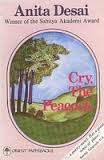
VOL- 2; ISSUE- 3. - PUNE RESEARCH An International Journal in English (ISSN 2454-3454)
2.3.11

When Badal Sircar and “Satabdi†team were holding workshops on various burning issues such as: the cruel absurdities we live in, enormous wealth and immeasurable poverty; a flood running hundreds of thousands in the villages, and a huge crowd of fans gathering to see the film stars, construction of the underground railway in Calcutta and ninety percent of the underground water remaining untapped, rendering most of the arable land mono-crop—not just in this country, but in the whole world. On the basis of these bits of material, discussions were held and it was then one of the members of the theatre group came with a question “What about all those who dream of and die for the emergence of a new and better society?†It is this question that makes Sircar and his team to write this play Stale News. The play has been made by the group collectively. Sircar has made a script on the basis of the materials collected by the members and the decisions made.
The play starts with the depiction of the Santhal Revolt that took place in 1855-56. However to give the record of history is not intention here. Sircar feels that the Santhal revolt has indicated a way to the Indian people even in the twentieth century. However, he is worried to find that the contemporary middle-class continues to promote the cultural legacy of the colonialist. The play ends with a note that conditions have not changed fundamentally even today and audience are left to ponder over the situation.
VOL- 2; ISSUE- 3. - PUNE RESEARCH An International Journal in English (ISSN 2454-3454)
2.3.12

Karnad is very keen and sensitive in his
observation of life, society and the universe has always a definite message to
convey through his plays. Girish Karnad has raised lots basis burning questions
related to the crisis of human values in the society. Individual’s relations
with individual, family, society and state have been examined. It is displayed
through his plays that even in society there is no justice and quality. But
being a social human being everybody is bound to live in society and accept the
social values no matter if these are unbearable and need changes. Sometime, we
find that some honest social values remove all colour and joys from the lives
of human beings. Consequently, not only does Basavanna's movement fail but also
his followers emerge as a new caste as ‘lingayat’ after a few hundred years.
Keywords: lingayat, social resurrection, untouchability’ pragmatism, Fundamentalism
VOL- 2; ISSUE- 3. - PUNE RESEARCH An International Journal in English (ISSN 2454-3454)
2.3.13

Twelve years of English at school does not prepare Indian learners with adequate English language proficiency to pursue tertiary education, where instructions are mostly in English. One solution, which could prepare these students for their higher education is Intensive English Programme (IEP). All Western universities make it mandatory for non-native speakers of English to complete IEP successfully, before admitting them to any course in the university. These IEPs equip learners with sufficient English language skills and prepare them for university studies and they have been highly successful. The question is ‘Why can’t we do it for our Indian learners in Indian institutes? This paper presents insights from existing IEPs to develop IEP programmes in our own institutions.
VOL- 2; ISSUE- 3. - PUNE RESEARCH An International Journal in English (ISSN 2454-3454)
2.3.14

The necessary and sufficient condition
for the success of any organization is their technique of managing their staff.
Grapevine is the most effective tool in the hands of the managing authorities
with which they can have commanding hand over their employees without having a
bitter image. Grapevine is that mode of communication which drags the people
away from the invisible cage of protocols and rules. It provides an alternative
path of exchanging information without following the tedious path which involves
formal attitude. The paper encapsulates the use of grapevine at various levels
of any particular organization with its influence at every respective level.
The limitation or drawbacks of grapevine is also taken into a quick glance.
Key Words: Grapevine, communication, organization, attitude
VOL- 2; ISSUE- 3. - PUNE RESEARCH An International Journal in English (ISSN 2454-3454)
2.3.15

This paper is a study of the culture of the Dongria sect of the Kond Tribe of Odisha. An attempt has been made to document and study their culture through their rituals and festivals especially the importance of Bejuni’s (Female shamans) and Blood. The Dongria sub-sect of the Kond tribe of Orissa is one of the most ancient tribes of the world. The word ‘Konda’ means hill or hill men and originates from Telugu. Their culture is not only rich and ancient but also distinct in its every aspect. Their language is ‘kuvi’ which is oral and their traditions and narratives are thus passed down orally through generations. Their documentation is not only a paramount but also a challenging task as it is also susceptible to changes due to its orality. Magic is an important aspect of their autonomous religion as a number of ritualistic sacrifices are conducted to meet various community and personal gains. Therefore to comprehend their rituals understanding the significance of a ‘Bejuni’ (female shaman) is principle. She is arguably a living God as during the rituals she is believed to be in a trance wherein the God whom she is married to resides in her. She along with other Bejuni’s makes all the sacrifices wherein blood is another important element used to appease both the deities and the furies alike for the individual and community good of their tribe. Evans –Pritchard in ‘Social Anthropology’ said tribal communities have just as long a history as our own, and while they are less developed than our own societies in certain respects they are often more developed in others. I have made a small effort to document this culture which people sadly are unaware of or chose not to record lest its pristine beauty and richness fade into oblivion due to external multifaceted factors.
Key words: Kond, Dongria, Culture, Community, Rituals, Festivals, magico-religious, Bejuni, Blood.
VOL- 2; ISSUE- 3. - PUNE RESEARCH An International Journal in English (ISSN 2454-3454)
2.3.16

Anita Desai is a prominent Indo-English
novelist. She has added a new concept to the India English fiction. Her main
concern is to peel off layer after layer the human mind. She is interested in
the psychic life of her characters. Her novel, Where Shall We Go this Summer?
brings forth the agonized self and feminine sensitivity of the protagonist,
Sita. This paper attempts to analyze the novel to find out the instances of
feminine sensitivity in the life of Sita. Socio-cultural atmosphere of the
metropolitan life will be noted in particular. Sita’s family atmosphere wil be
studied. The purpose of this paper is to note the marital disharmony in the
life of Sita and her husband Raman. The main focus of this paper is to show how
feminine sensitivity, marital disharmony, family relations and socio-cultural
atmosphere are responsible for creating the feeling of loneliness in Sita and
compelling her to alienate herself from family and society. Finally, to mark
how Sita becomes the victim of psychological conflict and leaves the metropolitan
city for an island.
Keywords: Indian English Fiction, Psychic Balance, Feminine Sensitivity, Marital Disharmony, Loneliness, Alienation, socio-cultural atmosphere, Psychological Conflict.
VOL- 2; ISSUE- 3. - PUNE RESEARCH An International Journal in English (ISSN 2454-3454)
2.3.17

The present study explores Yemeni EFL learners and teachers’ attitudes toward learning and teaching English language at Al-Baida'a schools. In addition, it investigates the factors that influence their attitudes toward learning and teaching English language as well. Furthermore, it attempts to find out the differences between students and teachers attitudes at public and private schools. All the schools, public and private, in Al-Baida’a city have been included in the study. Two instruments were used in data collection, i.e. a questionnaire to students and interviews with teachers. It is found that a majority of students in Al-Baida'a city have positive attitudes towards learning English language. A small number of the participants showed their negative attitudes towards learning English language. The study also revealed that the private school students are more highly motivated and have stronger attitude than those of public ones. In contrast, it is found that there are no significant differences between teachers of English regarding their attitudes to teaching English. Most of the selected teachers showed poor attitudes toward teaching English language stating that it is just a duty and complaining shortage of support. It is also found that there are slight differences due to gender in favor of female student regarding their attitudes to learning English. Finally, the existence of a number of factors that affect both students and teachers’ attitudes toward learning and teaching of English has been revealed.
Key words: attitude aptitude motivation SLL FLL effective factors
VOL- 2; ISSUE- 3. - PUNE RESEARCH An International Journal in English (ISSN 2454-3454)
2.3.18

Anita Desai is one of the best known contemporary women writers of Indian fiction in English. She holds a prominent place because of the immense popularity she commands as a novelist of human predicament of anxiety frustration , alienation and loneliness. “Cry, the peacock†is a novel depicts the character of love hungry Maya. She was married to a man who was taught, love is another name of attachment, which is denounced by Geeta . Maya, the protagonist constantly seized by the fear of death, loneliness and alienation from her husband Gautama. Most of Desai’s protagonists are alienated character . It is alienation which brings a disastrous end of their life.
Key Words – Human Predicament, Frustration, Alienation
VOL- 2; ISSUE- 3. - PUNE RESEARCH An International Journal in English (ISSN 2454-3454)
2.3.19

Teenage is the age between the transition of childhood to young adolescence. This is the phase where the young adults needs identity and freedom from their parents and society in which they fought for their individuality. This may leads to negative aspects of tragic flaw in their life sometimes with negative peer pressure, alineated from peers and society.At this age they show interst with peers they follow them and listen to them, they give importance to their psychic. Abuse is another important thing they face. Paul zindel,an american playwright deals with the issues of teenagers especially teenage pergnancy,teen dating ,drinking,violence and so on. From the novels of Paul zindel young adults will get help to cope with the problems of their self identity, abuse and teen issues. Solutions for the problems are understood from the novels of Paul zindel are investigated in this paper.
Key Words - Young adolescence, Teenage pegnancy, Teen violence, Teen.
VOL- 2; ISSUE- 3. - PUNE RESEARCH An International Journal in English (ISSN 2454-3454)
2.3.20

Could we move away from regular text books and workbooks to teach language? The answers to this question keep getting revised as researchers come up with new approaches and methods. In this paper, we would be looking at why and how to use children’s literature in ESL classes for adult learners. We explore how this literature easily blends into various learning approaches that we employ in our classrooms. Children’s literature has immense potential that educators could harness in order to make their classes appealing and engaging.
Key words: language, literature, children’s literature, activities and tasks
VOL- 2; ISSUE- 3. - PUNE RESEARCH An International Journal in English (ISSN 2454-3454)
2.3.21

This present research paper analyzes female condition in two novels written by Mariama Bâ and examines the impact of race, class and gender on women‘s relationships. The novels emphasize how women face the challenges of patriarchal institutions and other attempts to subjugate them through polygamy, neo-colonialism, and constraints of tradition, caste prejudice, abuse of Islam and political instability. This research paper uses characterization and plot analysis to explore the different stories and messages the novels portray. As findings this study foregrounds the healing powers of female bonding, which allows women to overcome prejudice and survive, to enjoy female empowerment, and to extend female friendship into female solidarity that participates in nation building. However, Bâ appeals to women of the world to be a good mother to mould the characters of their daughters to struggle against the injustice inflicted on women by the patriarchal society.
Index Words: Women‘s relationships, Polygamy, Constraints of tradition, abuse of Islam, Political instability, Female bonding, Motherhood, Female Empowerment
VOL- 2; ISSUE- 3. - PUNE RESEARCH An International Journal in English (ISSN 2454-3454)
2.3.22

“Different theories about the nature of language and how languages are learned (the approach) imply different ways of teaching language (the method) and different methods make use of different kinds of classroom activity (techniques)†(Richards et al. 1985). This paper aims to define approaches and methods and also to draft a detailed account of the development of humanistic approach in English language teaching and learning with some of the humanistic affective factors involved in second language teaching. The subsequent sections will make the readers’ to become better informed about the current trends of English language teaching and learning humanistically i.e. Humanistic Approach and its classifications of methods ranks very suitable in language teaching and learning process.
Keyword: Humanistic, Approach, Method, Techniques, Affective
VOL- 2; ISSUE- 3. - PUNE RESEARCH An International Journal in English (ISSN 2454-3454)
2.3.23

VOL- 2; ISSUE- 3. - PUNE RESEARCH An International Journal in English (ISSN 2454-3454)
2.3.24

Ngugi Wa Thiong’o is considered as a singer of rich Kenyan culture. Major concern of his writing is issues of culture. His writing is full of promotion of Kenyan culture, heritage and languages, which have been marginalized and suppressed by colonial power. His writing is about Kenyan characters in specified Kenyan situations, depicting traditional Kenyan world. He has also highlighted a stark picture of marginalization and exploitation of native culture by the colonial forces. A cultural struggle between colonialism and native culture is one of the concerns of his novels. Colonialist bring Christianity with them and used as a tool to enroot in Kenya. In The River Between we find dominance of Christianity over native culture. For a spread of new culture colonial forces have used all means of suppression and exploitation. In his novel The River Between we find a tension between missionary introduced new culture and conventional Kenyan culture.
Key Words: culture, heritage, marginalization, struggle, colonialism, Christianity, dominance, suppression.
VOL- 2; ISSUE- 3. - PUNE RESEARCH An International Journal in English (ISSN 2454-3454)
2.3.25

Show Business, a novel by Shashi Tharoor, exposes a decorated picture of Bollywood, the Bombay film world with its tinselopportunities, hollow relationships and subsequent bitter truths. In exposing the various events behind the hero's success story, Tharoorgives his justification of mass market taste into an intellectual context. In fact, Show Business (1992) is afiction of the power of cinema and is a fable of present time, which conveys the message that illusion is the only reality and nothing is what it seems like at prima facie. It is Tharoor’s third fiction narrating the story of a protagonist who is a Bollywood star whose journey of career commences with ambition and greed, passes through love and deception and ends with a pathetic condition on death bed in an ICU of a hospital. The title of the novel Show Business itself hints at the Bollywood, India’s Hindi film Industry and portrays the journey of its fictional superstar, Ashok Banjara in it.
Key Words: English-language theatre, blissfully confident, monologue, largest electoral plurality, comatose Ashok, unceasing vigil, calculating bastard, Gypsy account, romantic entanglement, gentle vulnerability.
VOL- 2; ISSUE- 3. - PUNE RESEARCH An International Journal in English (ISSN 2454-3454)
2.3.26

The term ‘caste’, used to describe a
system of social relations that is considered to be uniquely Indian, and that
presumably distinguishes the traditional Indian society from the West, is
ironically not of Indian origin. As is well known, the term comes from the
Spanish word ‘casta, meaning race. The Portuguese seafarers, who arrived on the
west coast of Indian for trade in the fifteenth century, were the first ones to
use it in the Indian context. In the popular understanding, caste is an ancient
institution of the Hindus, based on the ideas of varna, karma, and dharma
pronounced in a text called the Manusmriti. These ideas translated into a
hierarchical society, structured around the notions of purity and pollution.
The varna system divided the Hindus into four varnas were the achhoots (the
untouchables). These four or five categories occupied different positions in
the status hierarchy, with the Brahmins at the top, followed by the other three
varnas in the order mentioned above, with the achhots occupying a position at
the very bottom.
VOL- 2; ISSUE- 3. - PUNE RESEARCH An International Journal in English (ISSN 2454-3454)
2.3.27

Dalit women are supposed as sub human being. She has been supposed as double exploited women physically, psychologically, sexually and socially. In her own family she has been exploiting and at the work place she has to face the exploitation of the higher caste master or boss. There are not double income sources for the Dalit family. Dalit women have to compel to do something to support the family. Maximum Dalit women are labour worker. They are illiterate, unemployed, confidenceless and courageless worker. For daily livelihood they want daily work. They don’t want to oppose the land lord or the master. They are ignorant about the lows and articles of Indian constitution which prepared for the women point of views. So this paper is an attempt to focus on the miserable conditions of the Dalit women in the 21st century with special reference to Meena Kandasamy’s TOUCH anthology and Dalit women in the state of Gujarat.
Keywords: Double exploitation, income source, labour worker, Dalit women.
VOL- 2; ISSUE- 3. - PUNE RESEARCH An International Journal in English (ISSN 2454-3454)
2.3.28

The leadership motif, which occupied a
quiescent space in the last few novels of Lawrence, finds its first active
expression in Aaron’s Rod. With this novel Lawrence’s Antifeminism and
misanthropy are confined with his delusional faith in his own position as a
savior of mankind. And to strengthen this exaggerated notion he presents the
story of Aaron sisson, a minor who runs away from his wife and children in
search of a more wholesome life and gets enlightened in the company of Rawdon
Lilly, a born leader and the self-portrait of the novelist.
VOL- 2; ISSUE- 3. - PUNE RESEARCH An International Journal in English (ISSN 2454-3454)
2.3.29

Dalit Literature is a literature of protest, pain and agony. Its beginning can be traced back to the undocumented oral folklore and tales of the past decades. Most of the Dalit Literature is the voice of the voiceless in the caste-rooted Indian society. A commendable effort has been made by the Dalit writers in India. Bama is one a celebrated dalit woman writer in Tamilnadu. Vanmam (2002) is the third novel of Bama which brings out the issue of caste and instigated animosity by the upper-caste Naickers between the two castes within Dalits- Pallars and Parayars at Kandampatti village in Tamilnadu. The loss on both sides makes them understand the role of the upper castes and state machinery, especially the police in perpetuating their animosity. Towards the end of the novel the sub-castes of Dalits put an end to their Vendetta. Now they are united. They went for Panchayat polls united and captured power for the very first time from the entrenched uppercaste leadership. Since then they lived together in mutual tolerance and friendship. The novel mirrors inter caste rivalry in Dalit communities in India in general and in Kandampatti village in particular. My paper aims at the caste clashes among the Dalits and how they are used by the uppercaste people in promoting the animosity among themselves.
Key words: Dalit literature, Vanmam (Vendetta), Caste, Pallars and Parayars, Bama
VOL- 2; ISSUE- 3. - PUNE RESEARCH An International Journal in English (ISSN 2454-3454)
2.3.30

The use of a narrator is quite old, tracing its roots back to Oral Literature. A study into women narrators employed by Raja Rao, a male author as well as by Kamala Markandaya , a female writer, brings out the gender perspective of narration and social concern in their articulation. Both the novels, Kanthapura and Nectar in a Sieve portray life in a village prior to independence but the strategies employed by the two narrators are different. For one , India’s political freedom forms the core of the novel, for the other we get gleanings of political situation from the lives of women lived. The endeavour of this paper is to compare and contrast the female narrators used by male and female writers and their narrative techniques.
Key Words: Narration, Narrator, Narrative Techniques, Male Writers, Female Writers
VOL- 2; ISSUE- 3. - PUNE RESEARCH An International Journal in English (ISSN 2454-3454)
2.3.31

Joseph Conrad used varied techniques in
the narration of his celebrated work Heart of Darkness. Conrad does not involve
the narrator directly in the course of events, and keeps him apart so as to
critically observe all the characters and deliver it to the readers. The two
narrators were designed artfully and they were successful in describing the
chain of events one after the other. The first narrator opens the story and
hands over to the second narrator and at last again comes back in the
narrative.
VOL- 2; ISSUE- 3. - PUNE RESEARCH An International Journal in English (ISSN 2454-3454)
2.3.32

Terrorism as a threat is considered to
be the greatest challenge of today’s era. A clear evidence of this is the
regularly dominating news headlines filled with terrorist attacks and thwarted
plots. Terrorism is an attack on human rights. It is a crime which most of the
time targets innocent people. The innocent masses are not the direct target of
the terrorists, but are only a hidden means to achieve and serve political and
economic agenda. Terrorism affects different aspects of the society including
its political, social and economic set-up. Terrorism is a political tactic which
aims to demoralize the community and undermine its sense of security; it leaves
everlasting effect on every aspect of society. A country like India has been
struggling against terrorism, yet it continuously faces terrorist attacks which
disturbs its economic progress and its social fabric. Terrorism in any part of
the world is a threat to world peace and to human existence. The paper
discusses how these disruptive activities affect the psychological status,
social beliefs, attitude, and economical and political condition of any
country.
VOL- 2; ISSUE- 3. - PUNE RESEARCH An International Journal in English (ISSN 2454-3454)
2.3.33
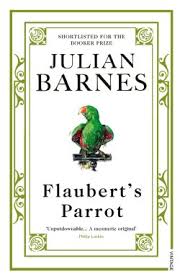
Narrative is a piece of writing that tells a story. It means a story and story-teller are the two important aspects of any narrative. In terms of narratology, a story teller is a narrator and what he or she tells is a narrative. In other words, a narrative is the fictional world in which narrated events take place. The title of the present research paper includes the term ‘multiple narratives’ that offers two different meanings. The first meaning is that the narrative tells the same story from different points of view. On the other hand, the term refers to the narrative, which tells several different stories narrated by the solitary voice or multiple narrators.
Julian Barnes’ Flaubert’s Parrot discloses these two meanings as it offers the story from different points of view and at the same time, the novel narrates four different stories. Multiplicity is one of the features of postmodernism and by using this feature Julian Barnes wants to subvert the established ideas. Earlier it was considered that there must be a single and an objective truth. There must be grand narratives that govern the other things. Julian Barnes subverts these ideas by using the postmodern technique of multiplicity to show the idea of subjective truth and the concept of mini-narratives. Therefore, the present paper intends to understand Barnes’ use multiple narratives in postmodern context.
Key Words: Multiple Narratives, grand and mini-narratives, truth, postmodernism, etc.
VOL- 2; ISSUE- 3. - PUNE RESEARCH An International Journal in English (ISSN 2454-3454)
2.3.34

Drama
is a composite art in which the written word of the playwright is concretized
when it becomes the spoken word of the actor on the stage. Indian drama written
in English and translated in English by Indian playwrights has registered a
remarkable growth recent decades. Contemporary Indian drama in English
translation has made bold innovations and fruitful experiments in terms of both
thematic concerns and technical virtuosities. It has been increasingly turning
to history, legend, myth and folklore, tapping their springs of vitality and
vocal cords of popularity with splendid results. Girish Karnad, Mohan Rakesh,
Badal Sircar and Vijay Tendulkar have remained the most representative of the
contemporary Indian drama not only in Hindi, Bengali, Marathi and Kannada
respectively but also on the pan-Indian level. Among the major dramatists
mentioned above, Girish Karnad has been regarded as the leading dramatist so
far as the use of myth and history is concerned and his plays vividly represent
this trend. In all his plays are mythical, historical or legendary Karnad’s
approach is modern. In his play, Hayavadana, he reinforces the central problem
of human existence in a world of tangled relationships. In Hayavadana, he skilfully
uses the principles and theme of Indian mythology, folk tales and folk theatre-
masks, curtains, dolls, the story-within-a-story to create a bizarre world of
incomplete individuals, indifferent gods, dolls that speak and children who
cannot world which appears to be indifferent to the desires and frustrations,
joys and sorrows of human beings. In this paper an attempt has been made to
study how successfully Karnad has used myth, folk tales and history to
represent his theme in his play.
Key
words- Mythology, Girish Karnad, Indian
mythology.